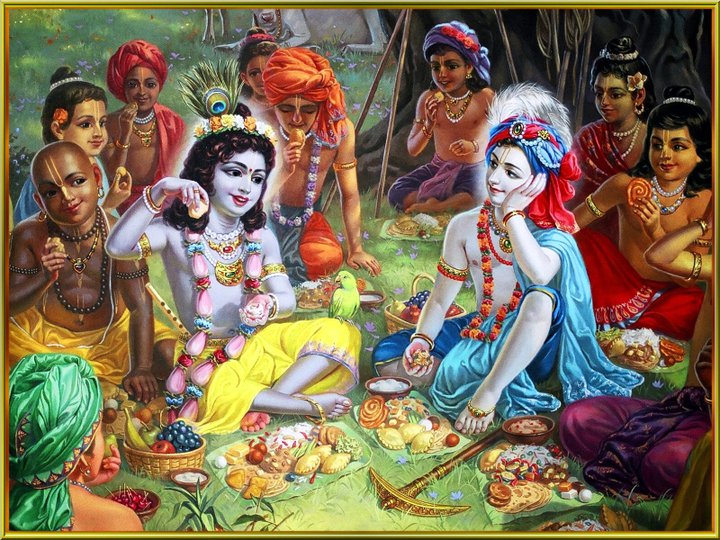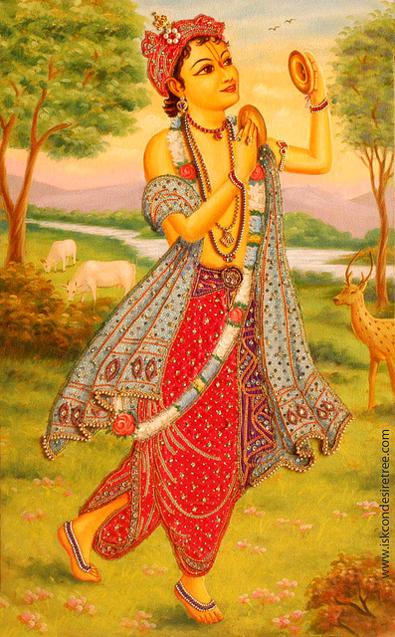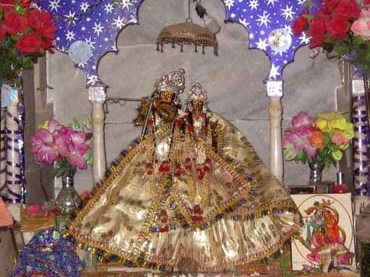Purushottama Dasa Thakura
“The twenty-third and twenty fourth prominent Devotees of Nityananda Prabhu were Sadashiva Kaviraja and his son Purushottama dasa, who was the tenth gopala. Since birth, Purushottama dasa Thakura was merged in the service of the lotus feet of Lord Nityananda Prabhu, and he always engaged in childish play with Lord Krishna.” – Krishnadasa Kaviraja Goswami
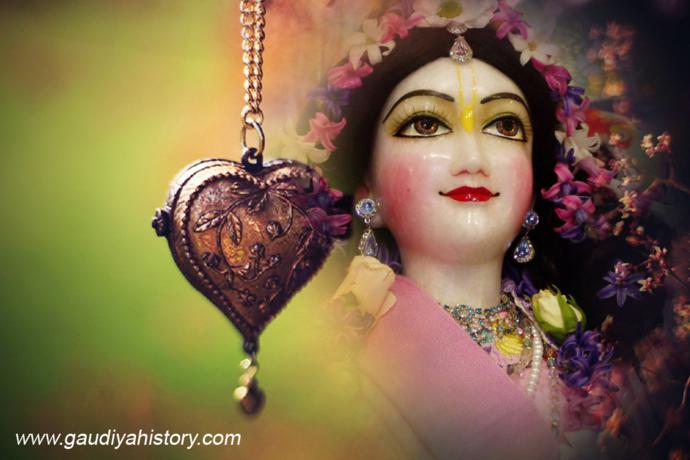
“Sadashiva Kaviraja was greatly fortunate. His son was named Shri Purushottama dasa. Purushottama dasa Thakura had no concern for his external body; Shri Nityananda Prabhu always resided within the core of his heart.” (Chaitanya Bhagvat Antya 5.741-742) (In the wallpaper: Shri Nityananda Prabhu, ISKCON Hungary, New Vraja Dham).
“Sadashiva Kaviraja was greatly fortunate. His son was named Shri Purushottama dasa. Purushottama dasa Thakura had no concern for his external body; Shri Nityananda Prabhu always resided within the core of his heart.” (Chaitanya Bhagvat Antya 5.741-742)
“Sadashiva Kaviraj was a great personality. Purushottam Das was his son. From birth, Purushottam das was absorbed in the service of the lotus feet of Lord Nityananda Prabhu, and he always engaged in childish play with Lord Krishna. His son was named Shri Kanu Thakur, a very respectable gentleman. His body was saturated with the nectar of Love for Lord Krishna.” (Chaitanya Charitamrita 1.11.38-40)
Vrindavan Das Thakur has also named Purushottam Das as one of Nityananda Prabhu's chief associates.
“Sadashiva Kaviraj was very fortunate to have a son like Purushottam Das. Purushottam Das had no external consciousness of his body, for Nityananda Prabhu is constantly acting through him.” (Chaitanya Bhagavat 3.5.741-2)
Lineage
For four generations the family of Purushottam Das consisted of eternally perfect direct associates of Mahaprabhu: Kamsari Sen, Sadashiva Kaviraj, Purushottam Thakur, and Kanu Thakur. The Gaura-ganodesha-dipika identifies Kamsari Sen as Ratnavali Sakhi and Sadashiva Kaviraj as Chandravali (156).
Shri Purushottama dasa Thakura had three principle disciples: Shri Mahdvacharaya, Shri Yadavacharya, and Devakinandana dasa. They were from brahmana families. Shri Mahvacharya later became the husband of Nityananda Prabhu’s daughter Ganga Devi. Shri Devakinandana dasa was the author of an important book glorifying the lives of different Vaishnavas. Purushottama dasa Thakura’s wife name was Jahanava. She passed away just after bearing Purushottama dasa Thakura’s son Kanu. Hearing the news, Nityananda Prabhu went to the house of Purushottama dasa Thakura and took his son Kanu with him to his own village of Khadadaha.
Shrila Prabhupada says
Sadashiva Kaviraja and Nagara Purushottama, who were father and son, are described in the Chaitanya-Bhagavata as maha-bhagyavan, greatly fortunate. They belonged to the vaidya caste of physicians. The Gaura-ganoddesha-dipika, verse 156, says that Chandravali, a most beloved gopi of Krishna, later took birth as Sadashiva Kaviraja, who was a great Devotee of Lord Chaitanya Mahaprabhu.
Purushottama dasa Thakura sometimes lived at Sukhasagara, near the Chakadaha and Simurali railway stations.
All the Deities installed by Purushottama Thakura were formerly situated in Beledana-grama, but when the Temple was destroyed, the Deities were brought to Sukhasagara. When that Temple merged in the bed of the Ganges, the Deities were brought with Janava-mata’s Deity to Sahebasanga Bedigrama. Since that place also has been destroyed, all the Deities are now situated in the village named Chandudegrama, which is situated one mile up from Palapada, as referred to above."
Shrila Bhaktisiddhanta Saraswati Thakur says
Purushottam Das Thakur lived at Sukhasagara, midway between the Chakdaha and Simurali railway stations. The Deities he installed were formerly served in Beledanga village, but when the Temple fell into the river, the Deities were taken to Sukhasagara. That Temple was also swallowed by the Ganges and so the Deities were brought with Jahnava Mata's Deity to Sahebdanga Berigram. Since that place was also destroyed, all the Deities were again moved about three or four miles to the village named Chanduregram, on the banks of the Ganges about one mile up from Pal Para.” (Anubhasya 1.11.39)
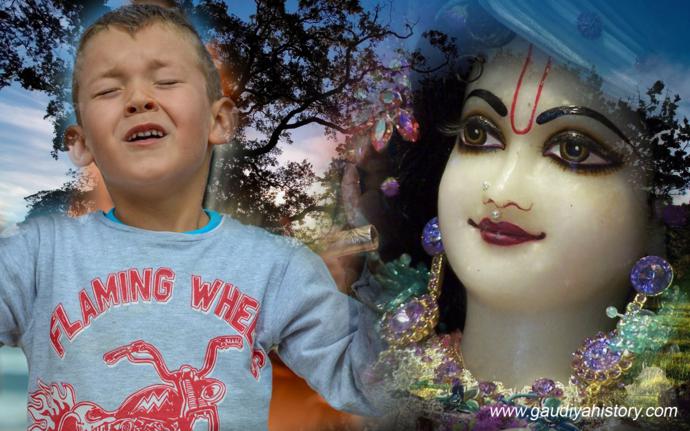
“I worship Sadashiva Kaviraj with great attentiveness. He was constantly intoxicated with love and had no external consciousness… I bow down to my worshipable Lord, Purushottam Thakur. Who can list his incomparable qualities? He was merciful to those who were devoid of virtue, displaying the natural power of his compassion. When only seven years old, he was so intoxicated with love for Krishna that he danced in a way that enchanted the entire world.” (In the wallpaper: Shri Gopinatha, ISKCON Belgium, Radhadesh, Devotee in Sankirtan Yagya, Europe).
Devakinandana Das, disciple of Purushottam Thakur writes
“I worship Sadashiva Kaviraj with great attentiveness. He was constantly intoxicated with love and had no external consciousness… I bow down to my worshipable Lord, Purushottam Thakur. Who can list his incomparable qualities? He was merciful to those who were devoid of virtue, displaying the natural power of his compassion. When only seven years old, he was so intoxicated with love for Krishna that he danced in a way that enchanted the entire world.”
Gaudiya-Vaishnava Abhidhana
“Some people say that Purushottam's surname was Nagar, while others say that the name Nagar comes from the name of the area where he lived. Since the five villages (Beledanga, Berigram, Sukhasagar, Manasapota and Pal Para) are so close together, this area is sometimes called Nagaradesh. Purushottam once ate snake poison when in a trance state without experiencing any ill effects. This was a source of great astonishment to all who witnessed it. Many of Nityananda Prabhu's associates often displayed such miraculous powers.”
